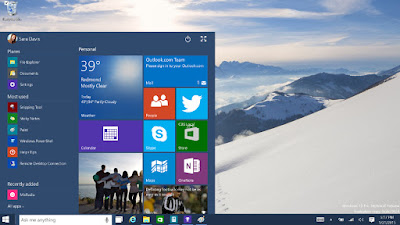Can Windows 10 give Microsoft a second life?
The tech company looks to redeem itself from the failure of its last operating system Windows 8.
In the last week of July, Microsoft will launch Windows 10. Since 1995, when Windows won over geeks and took over the world of computers, every launch of this operating system (OS) has been a big deal. Windows still powers over 80 per cent of world's computers. But there is one more reason why the release of the new Windows is a significant moment for computers users and Microsoft. It is an operating system that is supposed to fix the wrongs that Microsoft committed with Windows 8 in 2012.
Windows 8 was a disaster. With Apple's iPad stealing the show, Microsoft tried to counter it by Windows 8, an operating system that was supposed to be as easy to run on a tablet as it was on desktop. But the result was dis-appointing. Microsoft tried to do too many things with Windows 8 and lost focus. In the end, Windows 8 turned out to be too complex to be used on tablets and too sloppy and haphazard to really benefit laptop and desktop users. Its user interface was so confusing that enterprise users aka companies that use Windows in their offices opted for Windows 7 over it. Individual users too decided to skip it and even those who somehow ended up with the Windows 8, mostly hated it, finding it cumbersome to use.
Microsoft tried to fix Windows 8 with the Windows 8.1 in 2013 but the damage was done.
With Windows 10, Microsoft is going to undo this damage and so far it seems that the company is on the right track.
With Windows 10, Microsoft is focussing its energy on the core users of the operating system. These core users are people who run Windows on their laptops or desktops and not on tablets. So the whole user interface has been simplified and is now much more closer to the excellent Windows 7. The tile-based interface that Microsoft introduced in Windows 8 is gone. The start menu, which was removed in Windows 8, is back. Similarly, the whole interface has been retooled so that it is easier to use Windows 10 with a keyboard and mouse. This is unlike the approach Microsoft took with the Windows 8 where the focus was on touchscreens.
Windows 10 feels like a logical evolution of Windows 7, which arguably is the best operating system Microsoft has made so far. It marks a clean break from the Windows 8. But that doesn't mean it lacks new features.
While in terms of user interface and focus, Microsoft is returning to the basics - and these are good basics - it is adding some cool features that would make the new Windows appear modern. The user interface is pleasingly flat, showing that Windows 10 is an operating system that belongs to 2015. It also has features like Cortana, the virtual assistant that would help users interact with the computer with voice commands. While it won't be anything like what we saw in the Hollywood film Her, the idea is similar. The new OS also comes with unique features like desktop spaces - sort of virtual compartments that will help users keep their personal and professional lives separate - and universal search.
While we will know the full capabilities and limitations of Windows 10 once it is out, it is clear the new operating system is shaping up to be a classic similar to Windows 7. If it is everything that Microsoft has promised, it may even help the company save the Windows brand, something that took a hit after the Windows 8.



Comments
Post a Comment
Like our page https://www.facebook.com/knowledgewallet1